

| Online: | |
| Visits: | |
| Stories: |

| Story Views | |
| Now: | |
| Last Hour: | |
| Last 24 Hours: | |
| Total: | |
Curiosity Watches a Dust Devil Go Past

The left side of this 360-degree panorama from NASA’s Curiosity Mars rover shows the long rows of ripples on a linear shaped dune in the Bagnold Dune Field on the northwestern flank of Mount Sharp. The rover’s Navigation Camera recorded the component images of this mosaic on Feb. 5, 2017. Credits: NASA/JPL-Caltech
Tis a season of incredible wind driven activity on Mars like few before witnessed by our human emissaries ! Its summer on the Red Planet and the talented scientists directing NASA’s Curiosity rover have targeted the robots cameras so proficiently that they have efficiently spotted a multitude of ‘Dust Devils’ racing across the surface of Gale Crater.
The ‘Dust Devils’ are actually mini tornadoes like those seen on Earth.
But in this case they are dancing delightfully on Mars, as Curiosity surpassed 1625 Sols, or Martian days of exciting exploration and spectacular science and discovery.
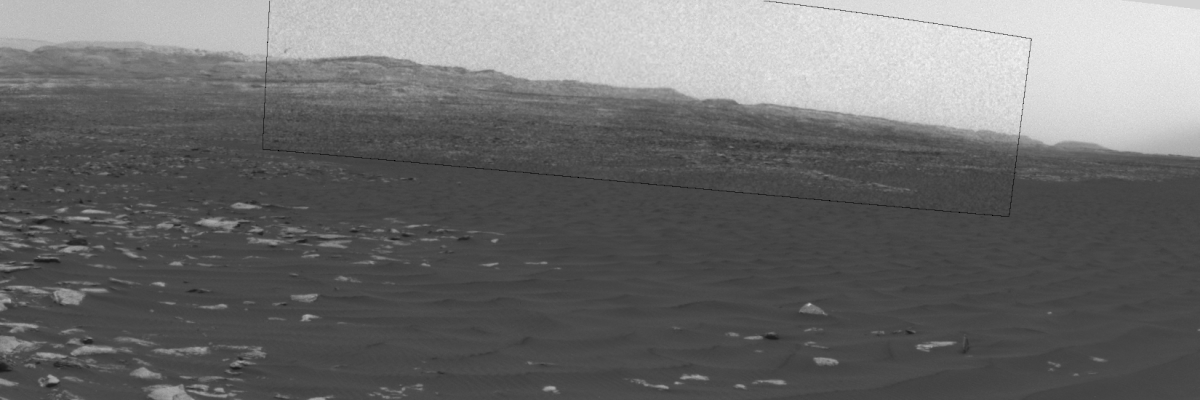
This sequence of images shows a dust-carrying whirlwind, called a dust devil, on lower Mount Sharp inside Gale Crater, as viewed by NASA’s Curiosity Mars Rover during the summer afternoon of Sol 1613 (Feb. 18, 2017). The navcam camera images are in pairs that were taken about 12 seconds apart, with an interval of about 90 seconds between pairs. Timing is accelerated and not fully proportional in this animation. Contrast has been modified to make frame-to-frame changes easier to see. A black frame provides a marker between repeats of the sequence. Credit: NASA/JPL-Caltech/TAMU
Furthermore they whip up the dust more easily in the lower gravity field on Mars compared to Earth. Mars gravity is about one third of Earth’s.
Right now it’s summer inside the rovers southern hemisphere landing site at Gale Crater. And summer is the windiest time of the Martian year.
“Dust devils are whirlwinds that result from sunshine warming the ground, prompting convective rising of air that has gained heat from the ground. Observations of Martian dust devils provide information about wind directions and interaction between the surface and the atmosphere,” as described by researchers.
So now is the best time to observe and photograph the dusty whirlwinds in action as they flitter amazingly across the craters surface carrying dust in their wake.
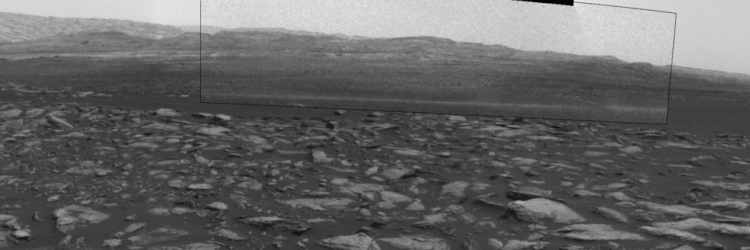
This sequence of images shows a dust-carrying whirlwind, called a dust devil, scooting across ground inside Gale Crater, as observed on the local summer afternoon of NASA’s Curiosity Mars Rover’s 1,597th Martian day, or sol (Feb. 1, 2017). Set within a broader southward view from the rover’s Navigation Camera, the rectangular area outlined in black was imaged multiple times over a span of several minutes to check for dust devils. Images from the period with most activity are shown in the inset area. The images are in pairs that were taken about 12 seconds apart, with an interval of about 90 seconds between pairs. Timing is accelerated in this animation. Credits: NASA/JPL-Caltech/TAMU
Therefore researchers are advantageously able to utilize Curiosity in a new research campaign that “focuses on modern wind activity in Gale” on the lower slope of Mount Sharp — a layered mountain inside the crater.
Indeed, this past month Curiosity began her second sand dune campaign focusing on investigating active dunes on the mountain’s northwestern flank that are ribbon-shaped linear dunes.
“In these linear dunes, the sand is transported along the ribbon pathway, while the ribbon can oscillate back and forth, side to side,” said Nathan Bridges, a Curiosity science team member at the Johns Hopkins University Applied Physics Laboratory in Laurel, Maryland, in a statement.
These new dunes are different from those investigated during the first dune campaign back in late 2015 and early 2016 that examined crescent-shaped dunes, including Namib Dune in our mosaic below.
The initial dune campaign actually involved the first ever up-close study of active sand dunes anywhere other than Earth, as I reported at the time.
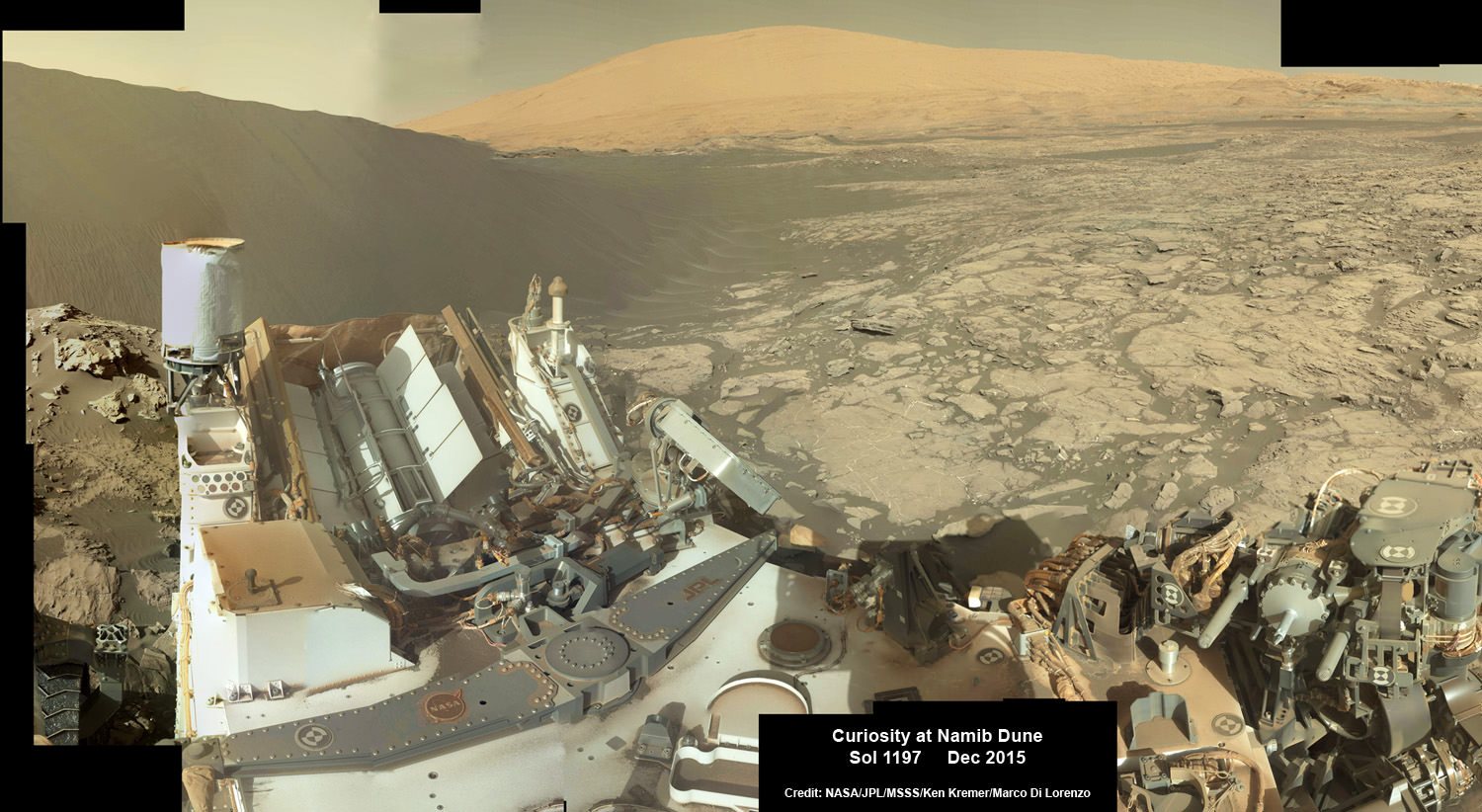
Curiosity explores Red Planet paradise at Namib Dune during Christmas 2015 – backdropped by Mount Sharp. Curiosity took first ever self-portrait with Mastcam color camera after arriving at the lee face of Namib Dune. This photo mosaic shows a portion of the full self portrait and is stitched from Mastcam color camera raw images taken on Sol 1197, Dec. 19, 2015. Credit: NASA/JPL/MSSS/Ken Kremer/kenkremer.com/Marco Di Lorenzo
By snapping a series of targeted images pointed in just the right direction using the rovers mast mounted navigation cameras, or navcams, the researchers have composed a series of ‘Dust Devil’ movies – gathered together here for your enjoyment.
“We’re keeping Curiosity busy in an area with lots of sand at a season when there’s plenty of wind blowing it around,” said Curiosity Project Scientist Ashwin Vasavada of NASA’s Jet Propulsion Laboratory, Pasadena, California.
“One aspect we want to learn more about is the wind’s effect on sorting sand grains with different composition. That helps us interpret modern dunes as well as ancient sandstones.”
The movies amply demonstrate that Mars is indeed an active world and winds are by far the dominant force shaping and eroding the Red Planets alien terrain.
The whirlwinds called “dust devils” have been recorded moving across terrain in the crater, in sequences of afternoon images taken several seconds apart.
The contrast has been enhanced to better show the dust devils in action.
The team is also using the probes downward-looking Mars Descent Imager (MARDI) camera for a straight down high resolution up-close view looking beneath the rover. The purpose is to check for daily movement of the dunes she is sitting on to see “how far the wind moves grains of sand in a single day’s time.”
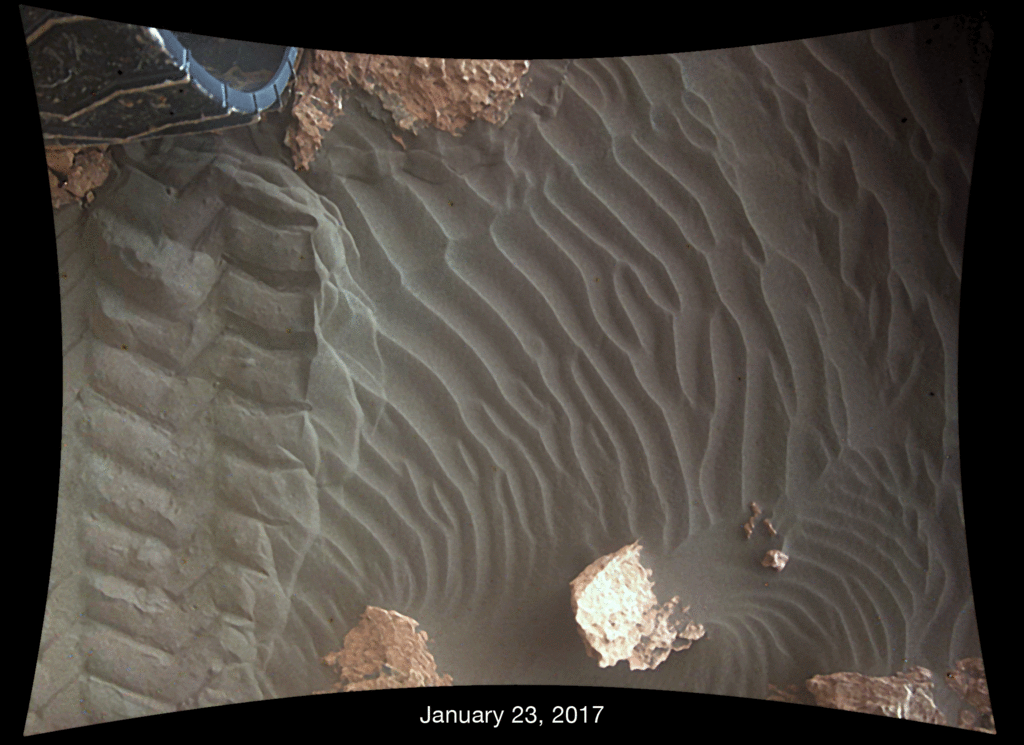
This pair of images shows effects of one Martian day of wind blowing sand underneath NASA’s Curiosity Mars rover on a non-driving day for the rover. Each image was taken just after sundown by the rover’s downward-looking Mars Descent Imager (MARDI). The area of ground shown in the images spans about 3 feet (about 1 meter) left-to-right. The images were taken on Jan. 23, 2017 (Sol 1587) and Jan. 24, 2017 (Sol 1588). The day-apart images by MARDI were taken as a part of investigation of wind’s effects during Martian summer, the windiest time of year in Gale Crater. Credit: NASA/JPL-Caltech/MSSS
These dune investigations have to be done now, because the six wheeled robot will soon ascend Mount Sharp, the humongous layered mountain at the center of Gale Crater.
Ascending and diligently exploring the sedimentary lower layers of Mount Sharp, which towers 3.4 miles (5.5 kilometers) into the Martian sky, is the primary destination and goal of the rovers long term scientific expedition on the Red Planet.
“Before Curiosity heads farther up Mount Sharp, the mission will assess movement of sand particles at the linear dunes, examine ripple shapes on the surface of the dunes, and determine the composition mixture of the dune material,” researchers said.
Curiosity is also using the science instruments on the robotic arm turret to gather detailed research measurements with the cameras and spectrometers.
As of today, Sol 1625, March 2, 2017, Curiosity has driven over 9.70 miles (15.61 kilometers) since its August 2012 landing inside Gale Crater, and taken over 391,000 amazing images.
Stay tuned here for Ken’s continuing Earth and planetary science and human spaceflight news.
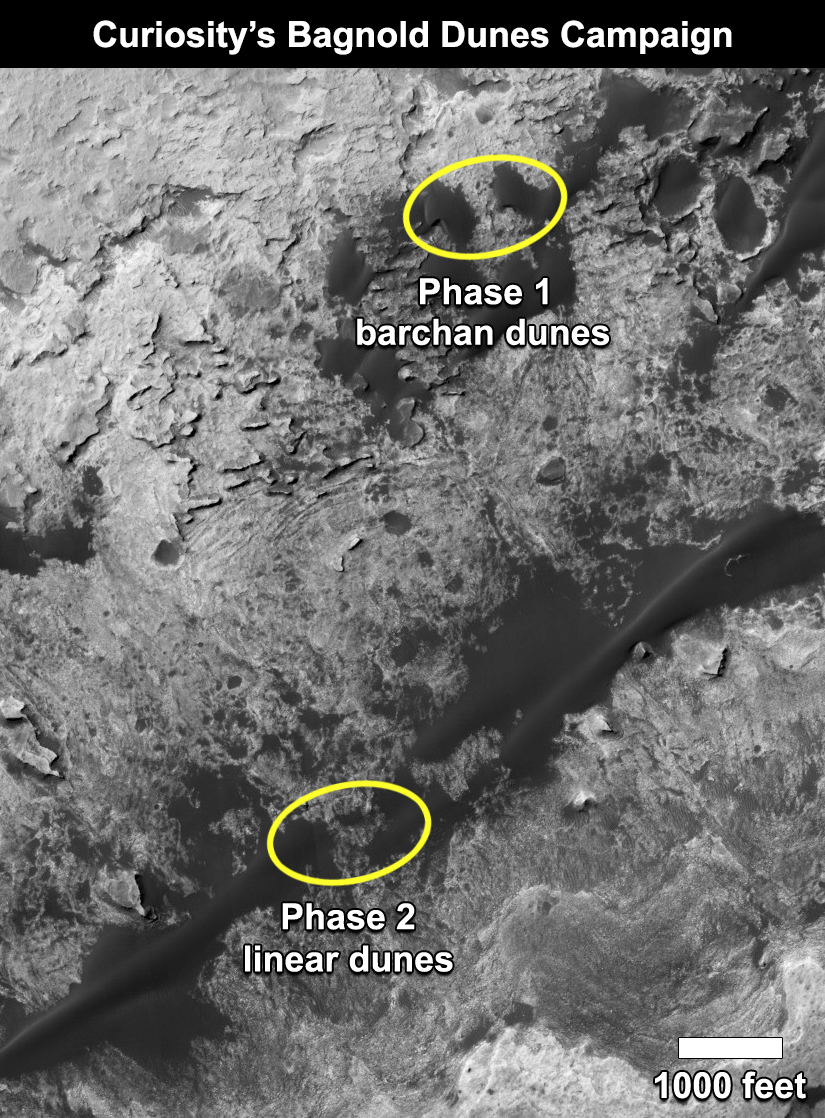
This map shows the two locations of a research campaign by NASA’s Curiosity Mars rover mission to investigate active sand dunes on Mars. In late 2015, Curiosity reached crescent-shaped dunes, called barchans. In February 2017, the rover reached a location where the dunes are linear in shape. Credits: NASA/JPL-Caltech/Univ. of Arizona
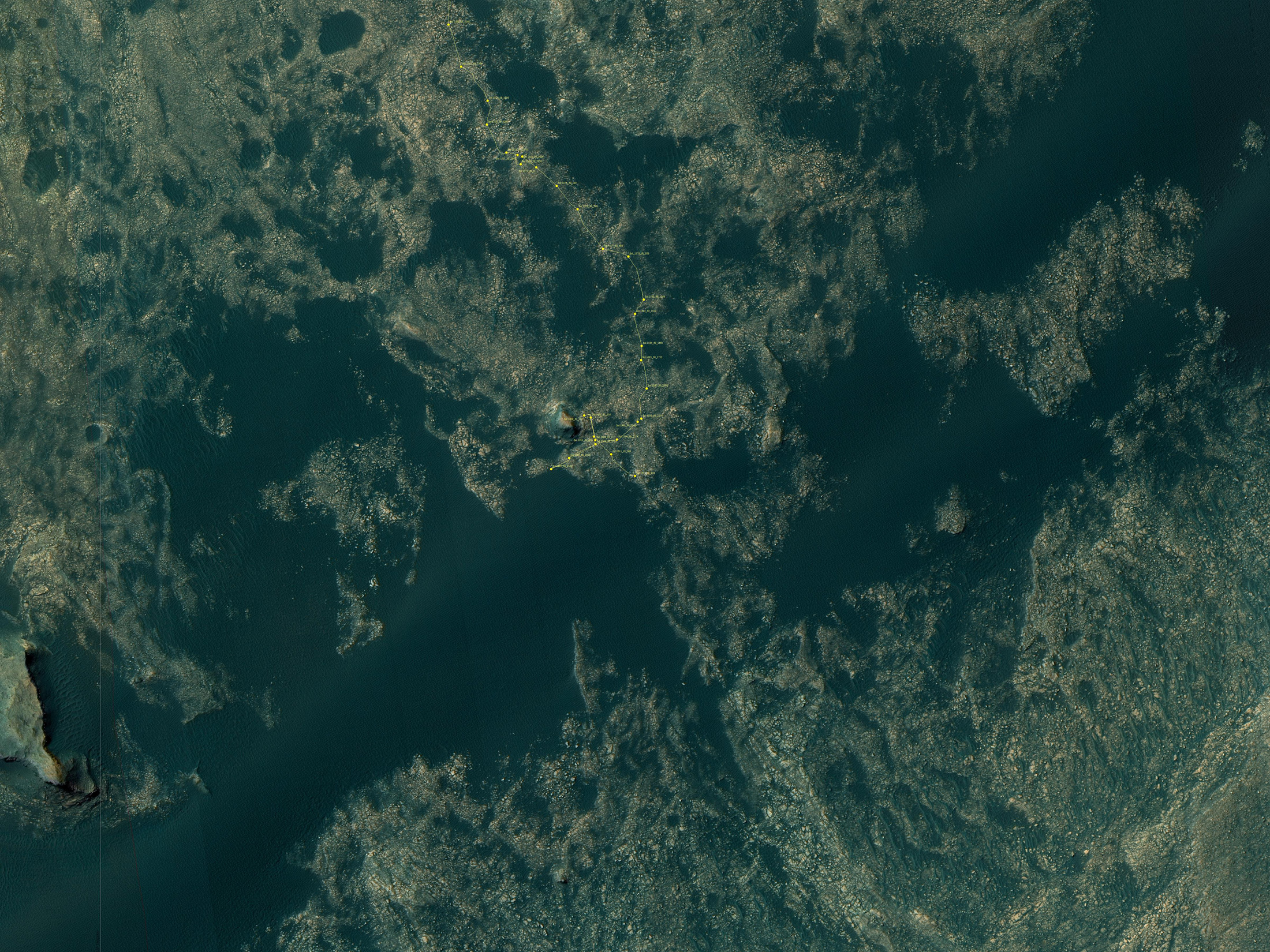
This map shows the route driven by NASA’s Mars rover Curiosity through Sol 1612 (February 17, 2017) of the rover’s mission on Mars. The base image from the map is from the High Resolution Imaging Science Experiment Camera (HiRISE) in NASA’s Mars Reconnaissance Orbiter. Image Credit: NASA/JPL-Caltech/Univ. of Arizona
The post Curiosity Watches a Dust Devil Go Past appeared first on Universe Today.
Source: http://www.universetoday.com/133946/curiosity-watches-dust-devil-go-past/


